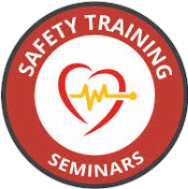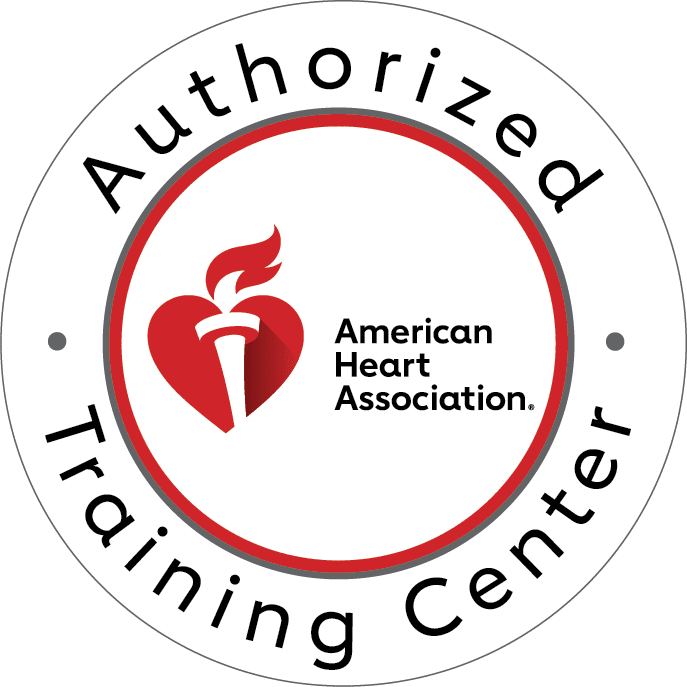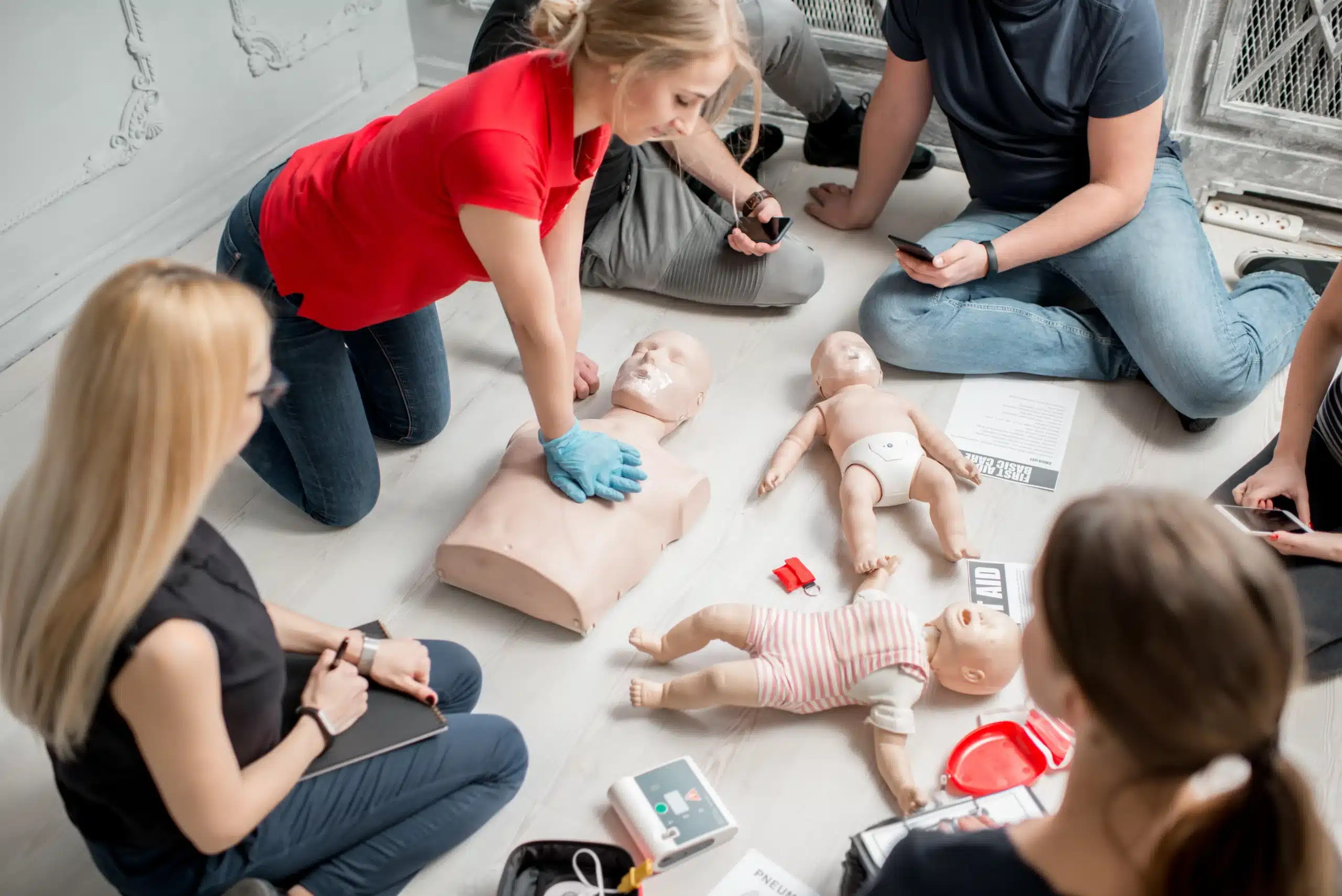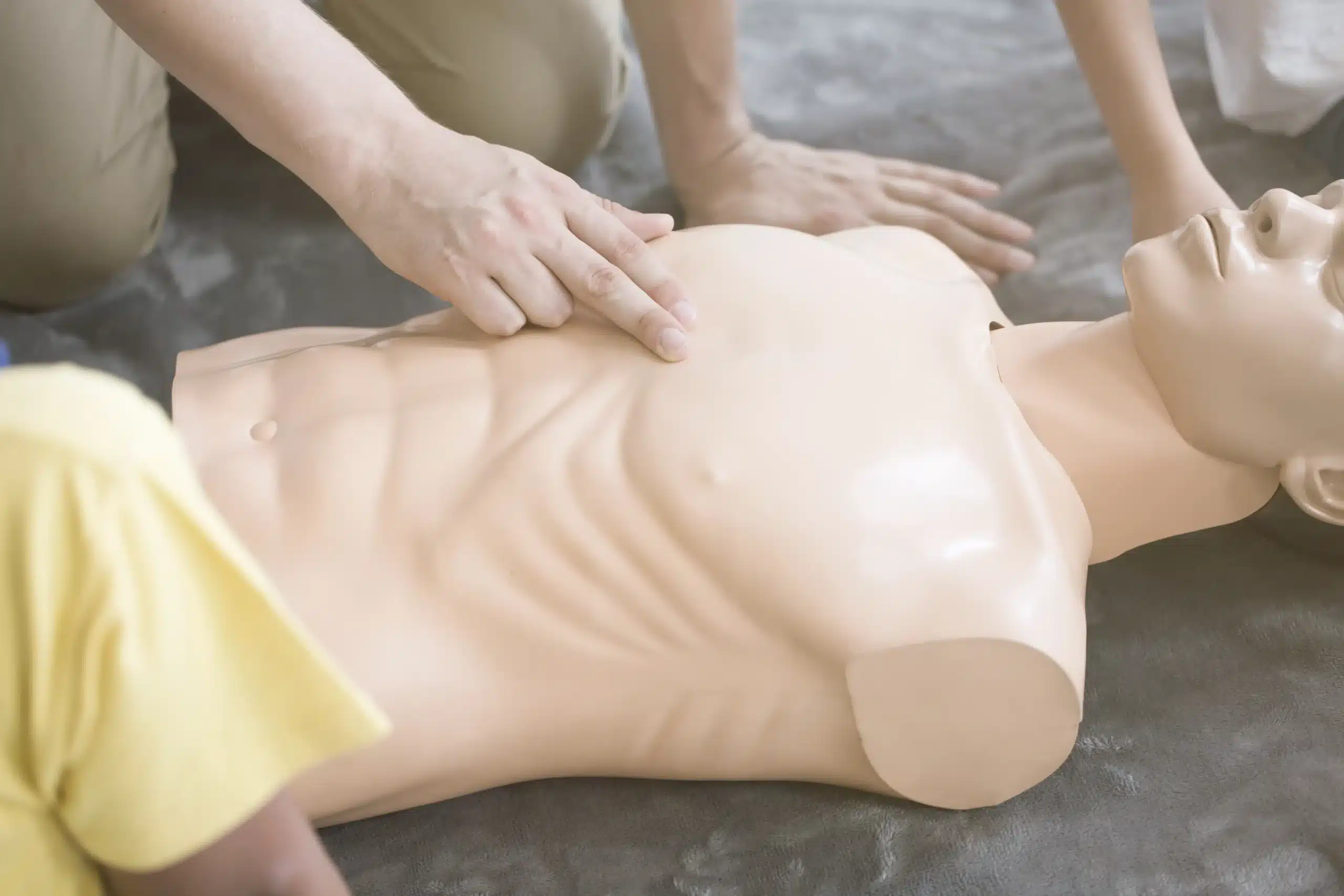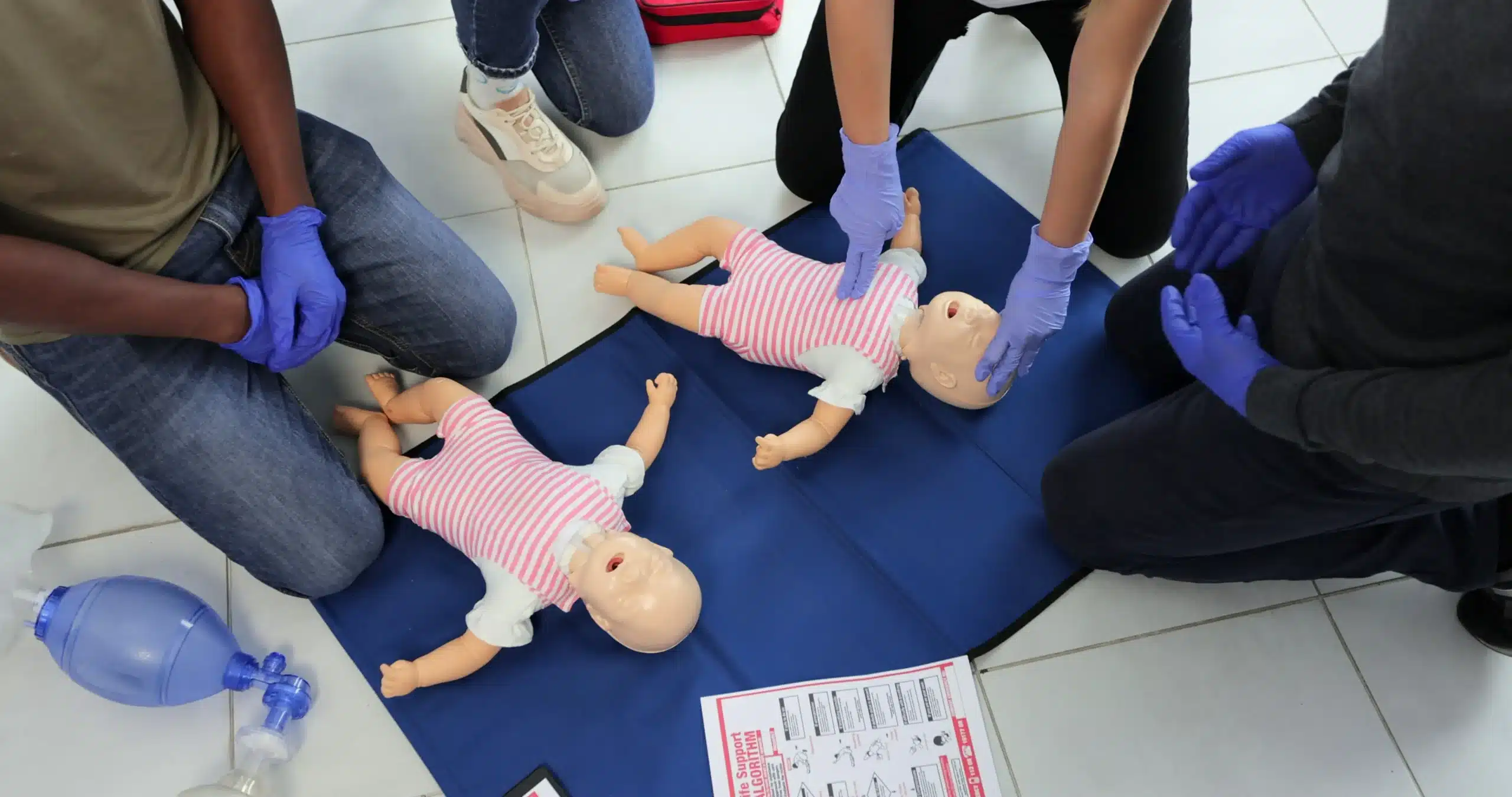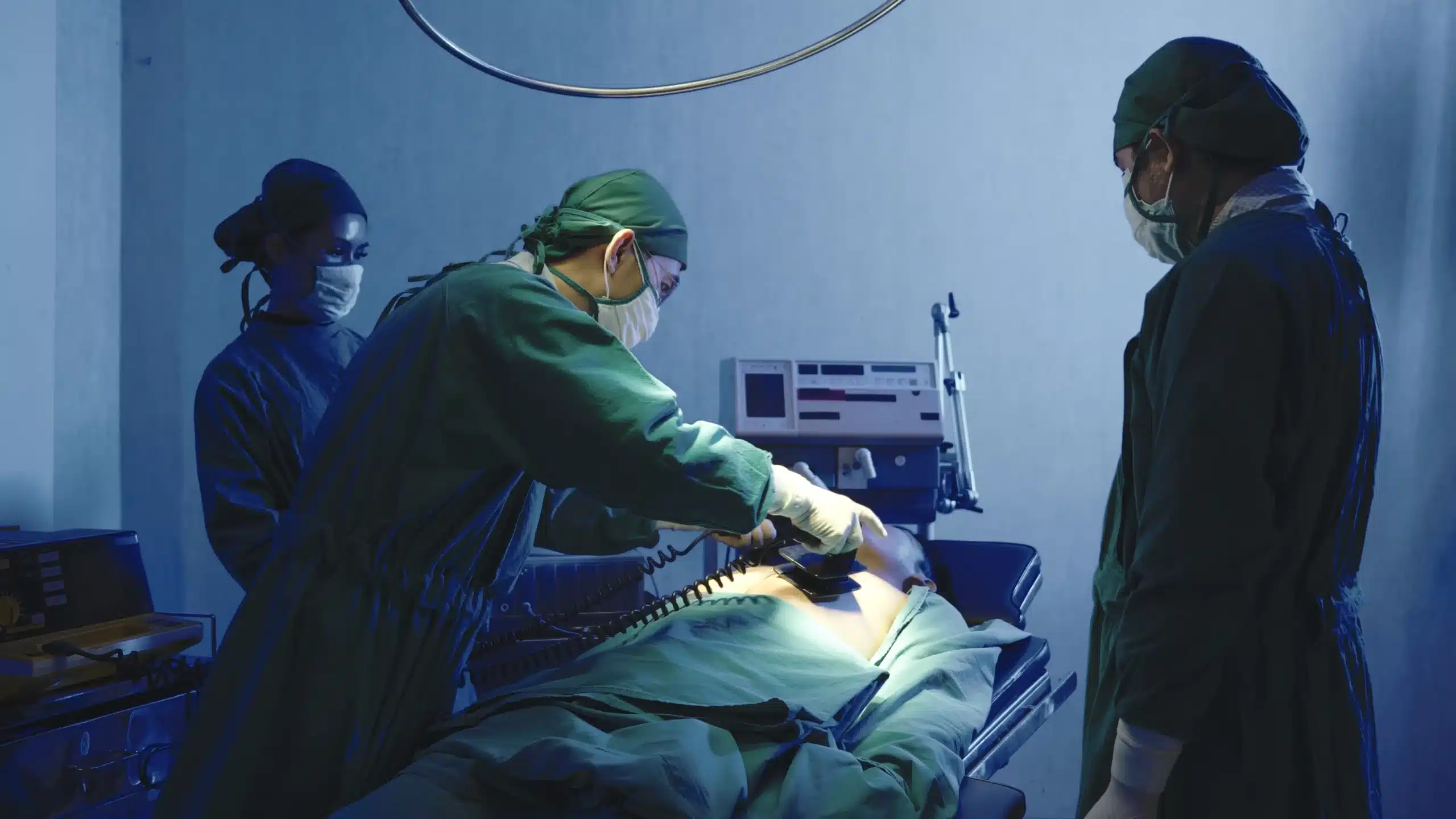Medical emergencies can happen anytime, anywhere. Are you prepared to respond? Getting trained in basic life support (BLS) in Alameda equips you with the skills to handle these critical situations. This post will guide you through the process of obtaining BLS certification in Alameda, from understanding the curriculum to comparing course providers and costs. We’ll also discuss the long-term benefits of BLS certification, both personally and professionally. Let’s explore how you can become a confident and capable first responder in your community.
Key Takeaways
- BLS certification equips you for emergencies: Learn essential skills like CPR, AED use, and airway management to confidently respond to life-threatening situations. This training prepares you to provide crucial care until professional help arrives.
- Choose a BLS course that fits your needs: Consider factors like AHA certification, instructor experience, cost, schedule, and course features when selecting a program in Alameda. Providers like Safety Training Seminars offer various options to meet diverse needs.
- Stay current with your BLS skills: Maintain your certification and proficiency by taking renewal courses and pursuing continuing education opportunities. Keeping up with the latest guidelines ensures you can deliver effective care in any emergency.
What is Basic Life Support (BLS) in Alameda?
Basic Life Support (BLS) training in Alameda gives you the skills to respond to medical emergencies, providing essential care until professional help arrives. It bridges the gap between the start of a crisis and the arrival of paramedics. This training goes beyond basic first aid, focusing on life-threatening situations. BLS certification is a significant step if you want to feel confident and competent in responding to emergencies. Learn more about BLS training in our comprehensive guide.
What BLS Training Covers
BLS training covers essential skills for handling various medical emergencies. You’ll learn to recognize and address cardiac arrest, breathing problems, and choking. The curriculum typically includes CPR, AED use, and clearing airway obstructions. Safety Training Seminars offers comprehensive, AHA-certified courses in Alameda covering these crucial elements. This training provides a solid foundation for anyone in healthcare or anyone who wants to be prepared for emergencies.
BLS vs. CPR: Key Differences
While both BLS and CPR save lives, there are key differences. CPR focuses on the basics: chest compressions and rescue breaths for cardiac arrest. BLS includes CPR and adds more advanced techniques, like airway management and AED use. BLS certification is generally for healthcare providers and first responders, while CPR training benefits everyone. The American Red Cross details the differences between these two certifications. Understanding these differences helps you choose the right training.
Top BLS Course Providers in Alameda
Finding the right BLS course in Alameda means finding a provider that balances quality instruction with convenience and affordability. Here’s a closer look at some of the top options:
Safety Training Seminars
Safety Training Seminars is a woman-owned AHA Training Center offering various courses, including BLS, ACLS, PALS, CPR, and First Aid. They prioritize customer service and provide same-day certification cards—a major plus for busy professionals. With courses running daily throughout Alameda and surrounding areas, they offer schedule flexibility. They also offer group discounts, making them a cost-effective choice for workplaces certifying multiple employees.
CPR Education
CPR Education, offered through Alameda CPR Classes, uses a blended learning approach. Their combined CPR and First Aid certification includes online instruction and in-person skills testing. This format lets students learn at their own pace before demonstrating their skills. This combined course offers a streamlined way to earn both certifications, saving you time and money.
Bay Area CPR
Bay Area CPR partners with Safety Training Seminars to deliver American Heart Association courses throughout the Bay Area, including Alameda. This collaboration expands the reach of Safety Training Seminars’ instruction. Like Safety Training Seminars, they offer various courses, including BLS, ACLS, PALS, First Aid, and CPR, meeting the diverse needs of healthcare providers and other professionals.
American Heart Association
While not a training provider itself, the American Heart Association sets the standard for resuscitation training. Their Resuscitation Quality Improvement (RQI) program is popular among medical professionals seeking BLS, ACLS, and PALS certification. This program emphasizes continuous quality improvement and offers flexible, self-directed learning. Many training centers in Alameda, including Safety Training Seminars, use the AHA’s RQI program.
Compare BLS Courses: Price, Duration, and Features
When choosing a BLS course in Alameda, comparing cost, time commitment, and special features is essential to finding the right fit. Let’s break down these factors to help you make an informed decision.
Course Costs
BLS course fees in Alameda can vary. Safety Training Seminars offers a combined CPR and First Aid certification course for $140, covering online instruction, in-person skills testing, and your certification card. Compare this with other providers like CPR Education and Bay Area CPR to find competitive pricing. Check for potential group discounts if registering with colleagues or friends. Safety Training Seminars is committed to offering the lowest prices in Alameda County.
Time Commitment
The time you’ll spend on a BLS course depends on the format and provider. A full BLS Provider Course typically requires about 4.5 hours, covering skills practice and testing. Factor in any pre-course work or online modules if you choose a blended learning format. Consider your schedule and choose a course length that works for you.
Additional Fees & Materials
Some courses may have additional fees for materials or online access. Many BLS training courses now utilize a blended learning format, combining online learning with hands-on skill practice. Clarify any extra costs upfront.
Unique Offerings & Specializations
Look for courses that offer unique features or specializations. Safety Training Seminars, a woman-owned AHA Training Center, provides high-quality American Heart Association courses, including BLS, ACLS, and PALS. They also offer the American Heart Association RQI program—a popular and efficient way for medical professionals to get their BLS, ACLS, and PALS certifications. If you’re interested in childcare health and safety, they also offer EMSA Child Care Health & Safety training. Consider these specializations when selecting a course.
Instructor Qualifications & Course Quality
Choosing the right BLS course involves more than just finding a convenient time and location. You also want assurance that you’re learning from qualified instructors and receiving high-quality training. Here’s what to look for in a BLS course provider:
AHA Certification Requirements
First and foremost, confirm that the training center and instructors hold American Heart Association certification. Safety Training Seminars is a woman-owned AHA Training Center, meaning our courses adhere to the latest AHA guidelines and standards. This ensures you receive a recognized certification upon completing the BLS course. AHA certification is often a requirement for many healthcare jobs and other professional settings.
Healthcare & Emergency Services Background
While AHA certification is essential, real-world experience adds another layer of valuable insight. Instructors with backgrounds in healthcare and emergency services offer practical examples and answer your questions based on firsthand knowledge. Look for courses taught by professionals actively working in these fields. This practical experience can significantly impact how you understand and apply the skills. Safety Training Seminars prioritizes instructors with relevant experience to enhance your learning.
Hands-On Practice & Skills Assessment
BLS skills require more than just textbook knowledge; they demand practical application. High-quality BLS courses emphasize hands-on training and skills assessment. Look for courses that include practice on mannequins and opportunities to perform the skills you learn in a simulated environment. This hands-on practice builds confidence and prepares you to respond effectively in a real emergency. Many BLS training courses now incorporate blended learning, combining online coursework with in-person skills sessions. This approach allows for flexible learning while still providing crucial hands-on practice. You’ll receive an official American Heart Association certification card, valid for two years, upon course completion.
Register for a BLS Course in Alameda
Getting your BLS certification in Alameda is easier than you think. With various course options and flexible scheduling, you can find a program that fits your needs and calendar. Here’s what you need to know about registering for a BLS course:
Online Registration
Many providers, including Alameda CPR Classes, offer a streamlined online registration system for their CPR and First Aid certification courses (which includes BLS). This often involves completing the cognitive portion of the course online at your own pace, followed by an in-person skills session. This blended learning approach offers flexibility for busy professionals and those who prefer self-paced learning. You can review key concepts and procedures online before demonstrating your skills in a practical setting.
Group Discounts & Promotions
If you’re training a group of employees or colleagues, ask about group discounts. Safety Training Seminars, for example, provides reduced rates for group registrations and may even offer on-site training at your workplace. This can be a budget-friendly option for businesses and organizations. Also, check for any promotions or special offers that could lower the certification cost.
Flexible Scheduling
Finding a course that coordinates with your schedule is essential. Alameda CPR Classes offers BLS certification courses throughout the week with various time slots, often between 7 am and 6 pm. This flexibility helps you choose a time that works with your personal or professional commitments. Whether you’re a healthcare worker, a student, or just looking to get certified, you can find a course that accommodates your schedule.
Prepare for Your BLS Course
Getting ready for your BLS course doesn’t have to be stressful. A little preparation goes a long way toward a positive and productive learning experience. Here’s what you need to know:
What to Bring
Your BLS provider course is hands-on, so come prepared to participate actively. Wear comfortable clothing that allows for a full range of motion—you’ll be practicing techniques on mannequins and working with other students. Note-taking materials, while not mandatory, can be helpful for reviewing key concepts after the BLS course.
Pre-Course Study Materials
Many BLS training courses now utilize a blended learning format, combining online learning with hands-on skill practice. Safety Training Seminars offers this approach, allowing you to learn the basics online before attending the in-person skills session. Familiarize yourself with any pre-course materials provided. This will give you a head start and allow you to focus on mastering the practical skills during the in-person training. For example, some courses, like the combined CPR and First Aid certification, include an online component. Completing this beforehand allows you to jump right into the hands-on portion of the class.
Course Expectations
Safety Training Seminars provides American Heart Association (AHA)-certified courses, ensuring you receive high-quality training that meets industry standards. During your training, you’ll learn the essential skills to respond to various medical emergencies, from cardiac arrest and choking to stroke and opioid overdose. The course will cover core life-saving techniques, including CPR, using an AED, and relieving airway obstructions. Upon successful completion, you’ll receive your official American Heart Association BLS certification card, valid for two years. This nationally recognized certification demonstrates your proficiency in BLS. It is often a requirement for healthcare professionals and other roles.
Benefits of BLS Certification in Alameda
Getting your BLS certification in Alameda offers several key advantages, impacting your career, preparedness for emergencies, and ability to meet professional standards. Let’s explore how this training can benefit you:
Career Advancement
BLS training equips you with the skills to respond effectively to medical emergencies, delivering essential care until paramedics arrive. This ability to provide immediate assistance not only increases the chances of positive outcomes but also makes you a more competitive candidate in the healthcare field. Many Alameda healthcare employers require BLS certification, recognizing its importance in providing high-quality patient care. This certification demonstrates your commitment to patient safety and can create opportunities for more advanced roles and responsibilities. If you’re looking to advance your healthcare career, BLS certification is a valuable asset.
Emergency Preparedness
BLS certification goes beyond career advancement; it empowers you to be a vital resource in any emergency. The American Heart Association’s Resuscitation Quality Improvement (RQI) program, a popular choice for healthcare professionals seeking BLS certification, provides the knowledge and practice to confidently handle emergencies. This preparedness isn’t limited to the workplace; it extends to your daily life, enabling you to assist family, friends, or even strangers in critical situations. Knowing you can make a difference provides peace of mind and strengthens your role in the community. For more information about CPR classes and emergency preparedness resources in Alameda, visit the Safety Training Seminars website.
Legal & Professional Requirements
In many healthcare settings, BLS certification isn’t just recommended—it’s required. Employers and educational institutions often mandate BLS training to ensure their staff and students meet legal and professional standards for patient care. This requirement reflects the critical role BLS plays in maintaining a safe environment and providing timely intervention during medical crises. BLS classes cover the essential CPR certification needed for healthcare professionals and students. The opening of Safety Training Seminars’ new training center in Alameda makes access to affordable and flexible BLS certification even easier, allowing professionals to conveniently fulfill these crucial requirements.
Maintain Your BLS Certification
Once you’ve earned your BLS certification, staying current is key. Knowing the renewal process, pursuing continuing education, and keeping up with the latest guidelines will ensure you’re always prepared to provide effective, high-quality care.
Renewal Requirements & Process
BLS certification is typically valid for two years. As your certification nears its expiration date, you’ll need to recertify. This usually involves taking a recertification course, sometimes called a review course. Check with your certifying organization, such as the American Red Cross or American Heart Association, for specific requirements. Look for local providers like Safety Training Seminars that offer convenient renewal courses. Planning ahead and recertifying promptly keeps your skills and credentials current.
Continuing Education
Even if your certification isn’t due for renewal, regular refresher courses are a smart move. These courses reinforce your skills and knowledge, building your confidence in real-world emergencies. Look for opportunities to practice your skills and stay sharp between renewals. Consider local providers like Bay Area CPR for ongoing training.
Stay Updated on Guidelines
Emergency care guidelines can change as new research emerges and best practices evolve. Staying informed about these updates is crucial for providing the most effective care. The American Heart Association’s RQI program is one way for healthcare professionals to stay current with BLS, ACLS, and PALS certifications. Choosing a reputable provider like Safety Training Seminars ensures you receive training based on the latest guidelines. They offer a variety of courses and flexible scheduling, making it easier to fit continuing education into your busy schedule.
Choose the Right BLS Course
Choosing the right BLS course is crucial for receiving high-quality training and obtaining a recognized certification. Several factors can influence your decision, so consider your individual needs and preferences.
Factors to Consider
When selecting a BLS course, look for a reputable provider authorized by the American Heart Association (AHA). AHA-authorized training centers ensure your certification meets established standards and is widely accepted. Safety Training Seminars offers a range of AHA-certified courses. Experienced instructors are another important factor. They can provide personalized guidance and feedback, creating a more effective learning environment. Finally, consider the training center’s schedule. Flexible options accommodate busy schedules and make attending a BLS course more convenient.
Match Courses to Your Needs
Different courses cater to different needs. Think about your specific reasons for pursuing BLS certification. Are you a healthcare provider, a student, or someone seeking general knowledge? Safety Training Seminars offers various AHA-certified courses, including CPR and First Aid, ACLS, and PALS, allowing you to choose the best fit. If you’re in Alameda, consider their in-person BLS training tailored to the local community.
Blended Learning
Many BLS training courses now offer blended learning, combining online learning with hands-on skill practice. This format offers flexibility and convenience, allowing you to learn the cognitive material at your own pace online before attending an in-person session for practical skills assessment and certification. This approach ensures you receive both the knowledge and practical skills necessary for effective BLS. For more information on BLS training in Alameda, check out this helpful guide.
The Future of BLS Training in Alameda
The landscape of BLS training is constantly evolving, adapting to new technologies and the changing needs of healthcare. Here in Alameda, we’re seeing exciting developments that promise to make BLS training more effective and accessible.
Technological Advancements
Many BLS training courses now use blended learning, combining online learning with hands-on skill practice. This flexible approach allows students to learn at their own pace. Interactive simulations and virtual reality tools are also becoming more common, giving students realistic scenarios to practice their skills and build confidence. These advancements create a more engaging and effective learning experience, improving outcomes in real-life emergencies.
Evolving Healthcare Needs
As healthcare practices advance, so must the training of those on the front lines. The American Heart Association’s RQI program exemplifies this evolution. This program emphasizes frequent practice and assessment to maintain high-level resuscitation skills. This focus on ongoing proficiency ensures healthcare professionals are always prepared to deliver high-quality care during critical moments. The growing popularity of the RQI program for BLS, ACLS, and PALS certification in Alameda reflects our community’s commitment to providing the best possible care.
The Importance of Ongoing Education
CPR and first-aid training shouldn’t be a one-time event. Regular refresher courses are crucial for maintaining proficiency and staying current with the latest guidelines. Medical knowledge and best practices are constantly evolving, and ongoing education ensures that everyone trained in BLS can respond effectively in emergencies. This commitment to continuous learning ultimately leads to better outcomes for those in need.
Related Articles
- BLS Training in Alameda: The Ultimate Guide – Alameda CPR Classes
- BLS CPR Courses in Alameda, CA – Alameda CPR Courses
- BLS for Healthcare Providers in Oakland: A Practical Guide – Alameda CPR Classes
- Online CPR Classes in Berkeley: Your Complete Guide – Alameda CPR Classes
Frequently Asked Questions
What’s the difference between BLS and CPR certification?
CPR focuses on the essentials for cardiac arrest: chest compressions and rescue breaths. BLS builds upon CPR, adding techniques like using an AED and managing airways. Think of CPR as a vital component within the broader scope of BLS. BLS certification is often preferred for healthcare providers and those in professional rescuer roles, while CPR training is valuable for everyone.
How do I choose a BLS course provider in Alameda?
Look for a provider offering American Heart Association (AHA)-certified courses. This ensures the training aligns with the latest guidelines. Check for instructors with real-world experience in healthcare or emergency services. Consider factors like cost, schedule flexibility, and whether they offer additional certifications like ACLS, PALS, or First Aid. Reading reviews and comparing options can help you find the best fit.
What can I expect during a BLS course?
Expect a mix of interactive learning, demonstrations, and hands-on practice. You’ll learn to recognize life-threatening emergencies, perform CPR, use an AED, and relieve choking. Most courses involve practicing on mannequins and working with other students to simulate real-life scenarios. Be prepared to actively participate and ask questions.
How long does BLS certification last, and how do I renew it?
BLS certification is typically valid for two years. To renew, you’ll need to take a recertification course before your current certification expires. Check with your certifying organization or training provider for specific renewal requirements and available courses.
Why is BLS certification important?
BLS certification equips you with life-saving skills applicable in various situations. It’s often a requirement for healthcare professionals and other jobs. Beyond professional requirements, BLS training empowers you to confidently respond to emergencies, potentially making a significant difference in someone’s life.
